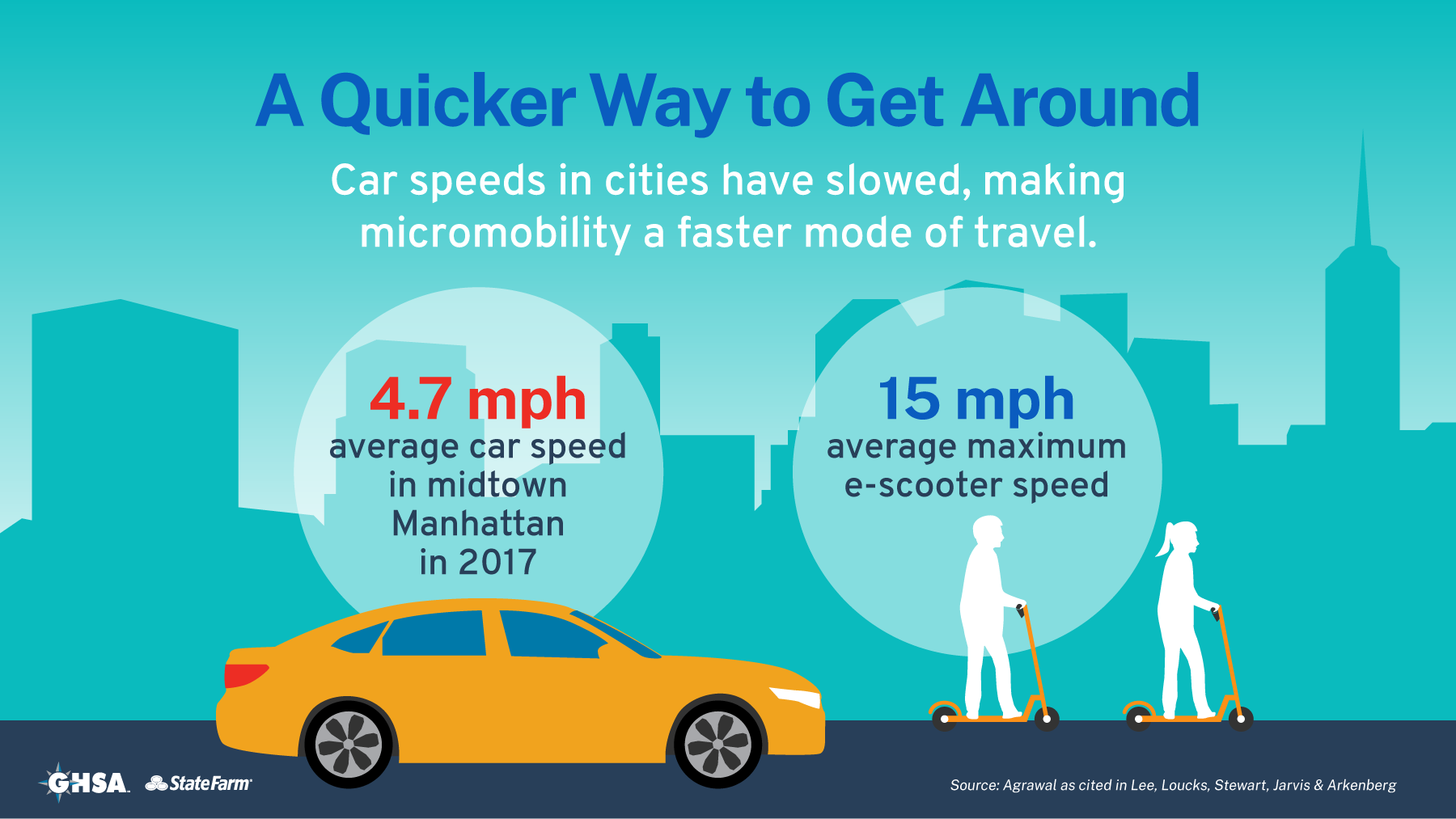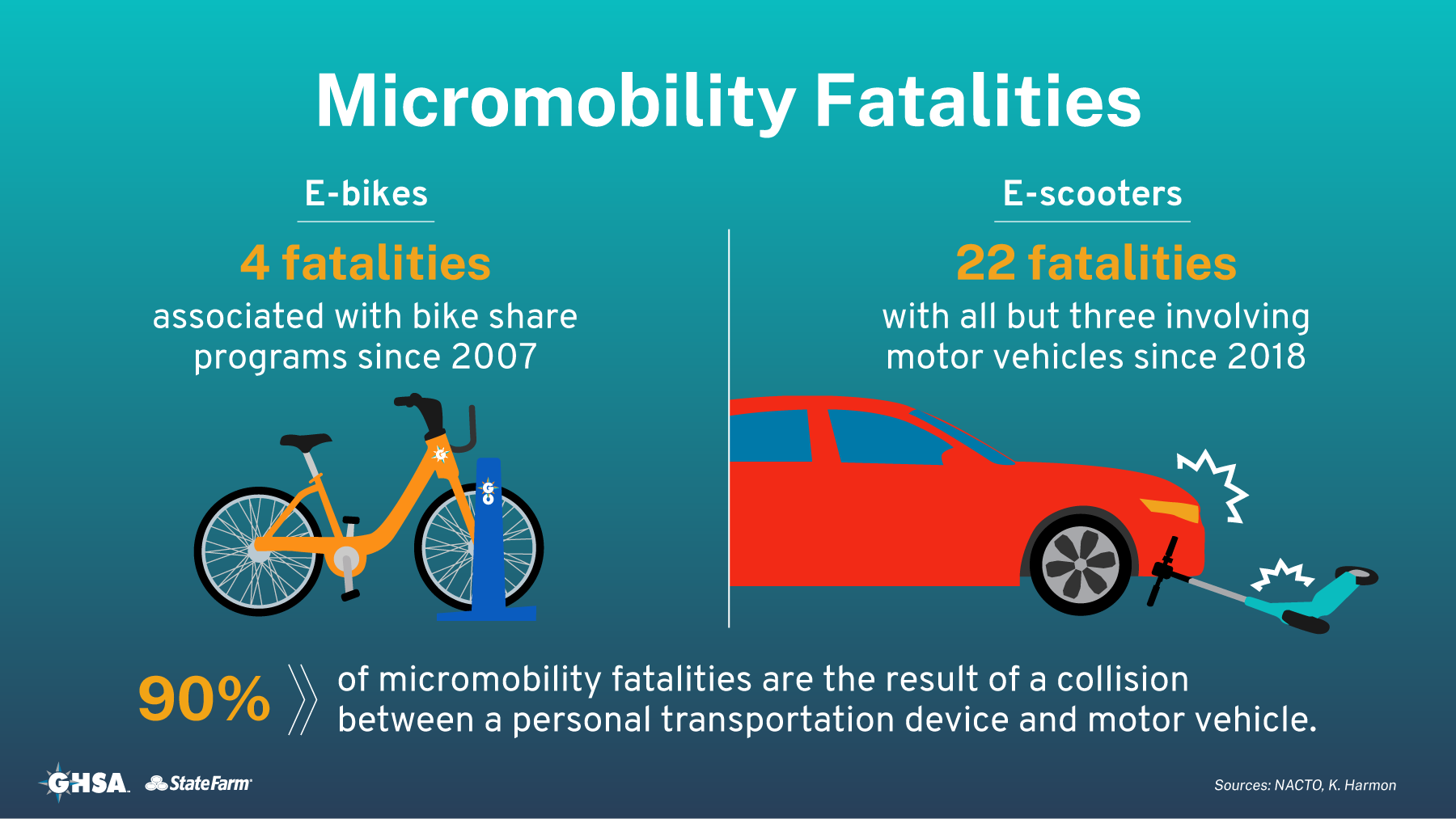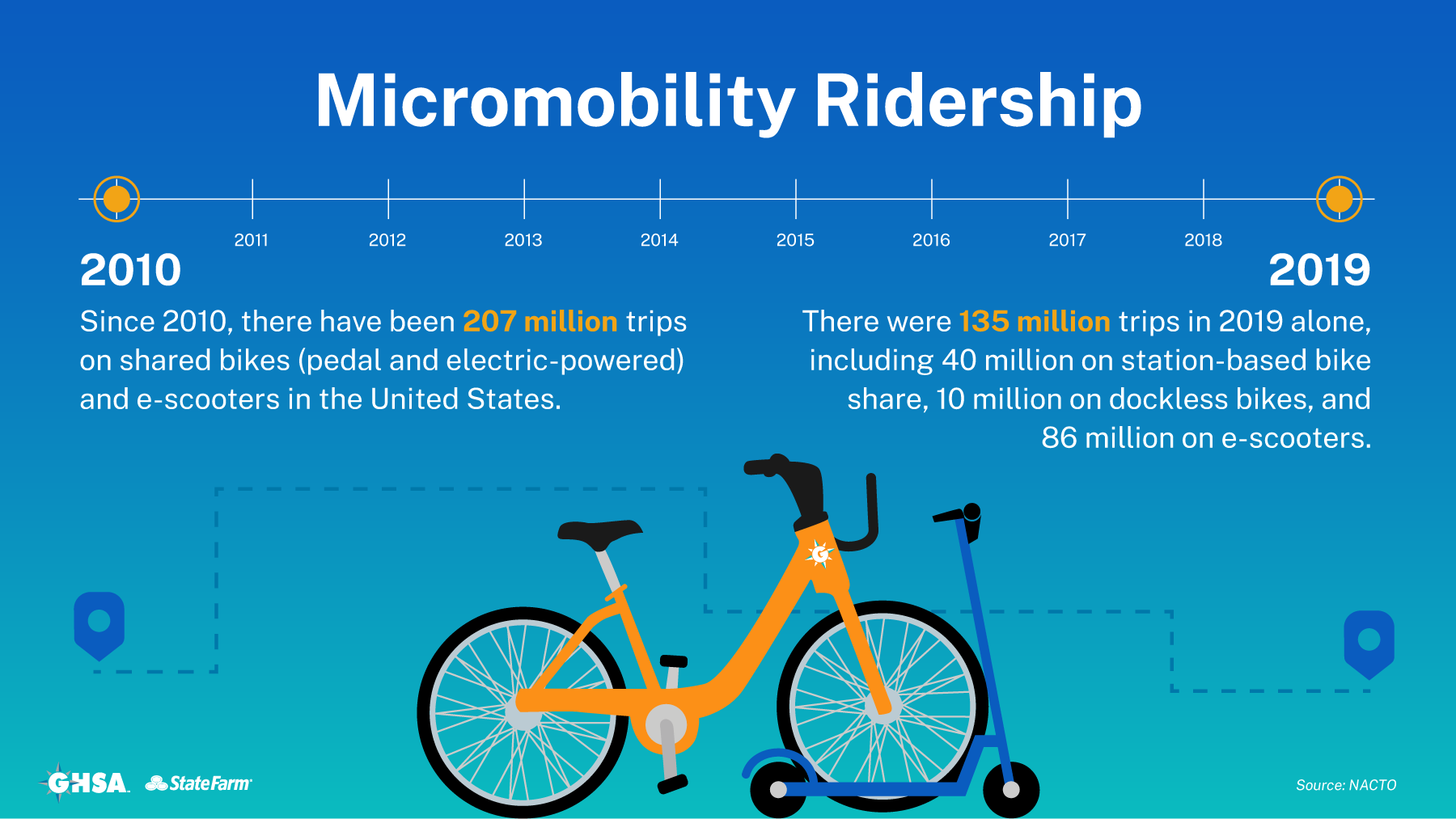
GHSA’s publication, Understanding and Tackling Micromobility: Transportation’s New Disruptor, explores six challenges – oversight, funding, data collection, enforcement, infrastructure and education – and the role State Highway Safety Offices (SHSOs) and their partners can play to help address them.
Pedal powered and electric bicycles and electric scooters, skateboards and skates are part of an evolving class of vehicles referred to as micromobility or personal transportation devices (PTDs). They’re typically low speed, light weight and partially or fully motorized and may be personally owned or part of a shared fleet. Micromombility experienced significant growth during the past decade fueled by the introduction of dockless e-scooters in 2018. While PTDs are predominantly used in cities and on college campuses, this viable and convenient mode of transportation could soon start appearing on suburban and small-town streets – if it hasn’t already done so.
Recognizing micromobility’s potential and that these devices are sharing the road and sidewalks with motor vehicles, traditional bicycles and pedestrians, there are inherent safety issues. And contrary to news reports and public perception, the pandemic has been a boon rather than a death knell for shared bikes and scooters in many locations. For this reason, SHSOs cannot stand on the sidelines. This publication offers concrete examples of what SHSOs can do, in partnership with others, to ensure PTD riders and all road users safely share the road.
This publication was funded by State Farm® and written and researched by Pam Shadel Fischer, GHSA’s Senior Director of External Engagement, with guidance from an expert panel. It is not intended to be inclusive of all policies or programs, nor does inclusion of a policy or program imply endorsement by GHSA, State Farm® or the expert panel.
- Download "Understanding and Tackling Micromobility: Transportation's New Disruptor"
- News Release: "As COVID-19 Shifts Transportation Preferences, New Report Highlights Need for E-scooter and E-bike Safety Initiatives"
The report features information about the new ICD-10-CM micromobility injury mechanism codes that went into effect on Oct. 1, 2020 (see page 22). States are encouraged to share the latest version of this announcement with their Traffic Records Coordinating Committee and public health officials to promote the codes’ widespread adoption.
Expert Panel
- Jonathan Adkins, Executive Director, Governors Highway Safety Association
- Ruth Esteban*, Highway Safety Specialist, National Highway Traffic Safety Administration
- Dr. Staci Hoff, Research Director, Washington Traffic Safety Commission
- Colin Hughes, Senior Policy Manager, New Mobility, Lyft
- Ken McLeod, Policy Director, League of American Bicyclists
- Jason JonMichael, Assistant Director, Austin Transportation Department
- Nicole Payne, Program Manager, National Association of City Transportation Officials
- Tamara Redmon*, Pedestrian Safety Program Manager, Federal Highway Administration
- Steve Roberson, Senior Research System Analyst, State Farm®
- Sharada Strasmore, Share Micromobility Planner, District of Columbia Department of Transportation
*Served in an advisory capacity
Infographics Available for Download
JPEGs of the following infographics are available for download under "Resource Downloads" below.




